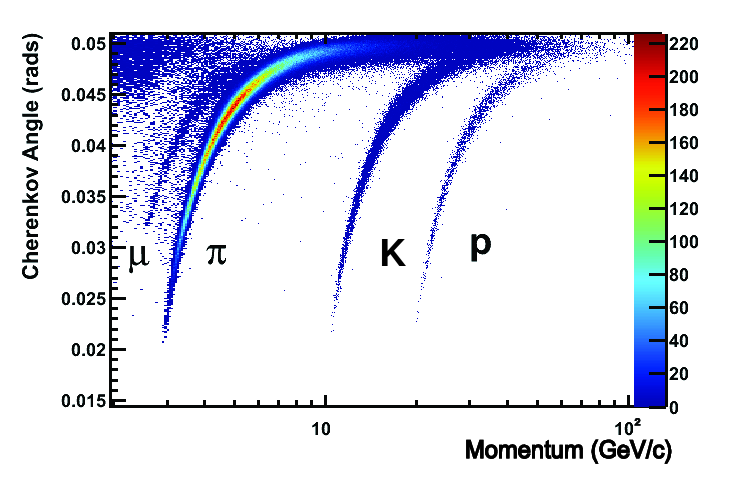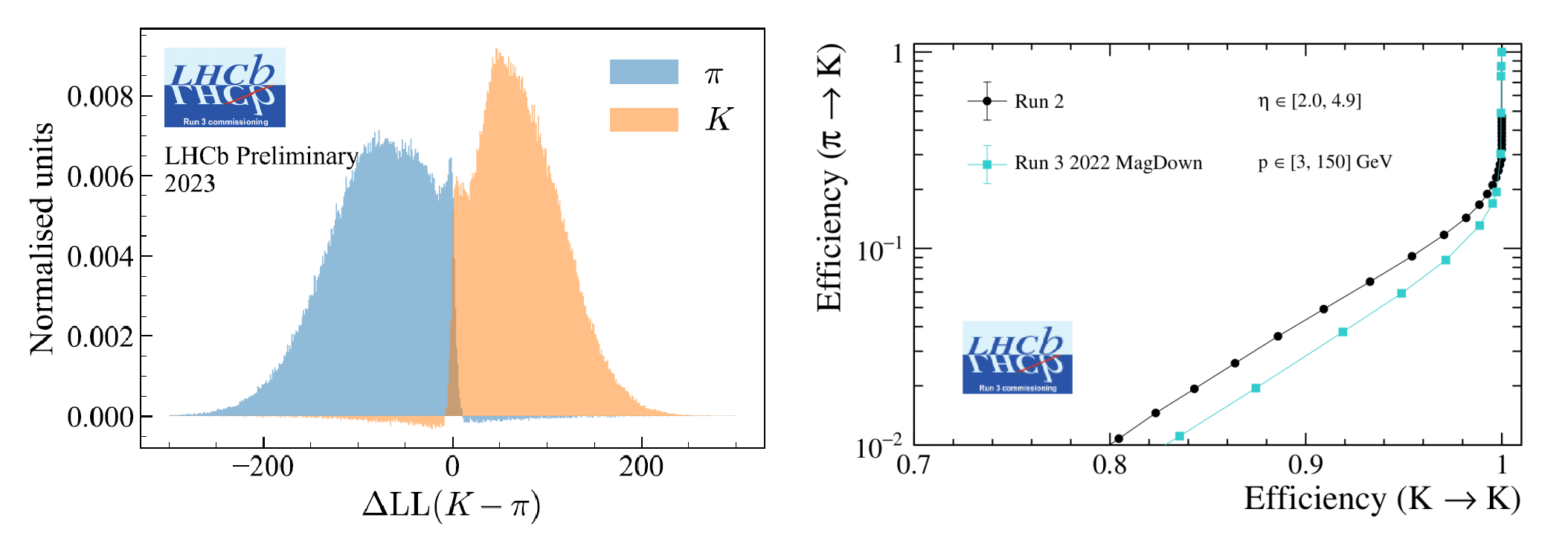The Imperial group has a long history of developing detectors for the LHCb experiment. The group's major activities have primarily focused on detectors for particle identification, and has recently expanded into tracking detectors that measure the momentum of charged particles.
Particle identification

Imperial's main focus on the detector is the experiment's ring imaging Cherenkov (RICH) detectors. These are used to identify different species of long-lived charged hadrons (pions, kaons, protons, and deuterons). Cherenkov radiation (the familiar glow around radioactive materials in films) is emitted when a particle travels faster than the speed light will travel in a particular medium. The photons are emitted at an angle with respect to the particle that depends on the particle's speed, producing a cone of light. Spherical mirrors are used to focus this cone into rings on our photon detectors, where the radius of the ring tells us the speed of the particle. Combining this information with the momentum of the particle measured from the tracking system, the particle's mass, and hence type, can be computed. An example of the measured angle at a given momentum for different particle species is shown to the left.

These detectors underwent a major upgrade ready for the 2022 run of the LHC, and imperial has a major role in development, construction, commissioning of these detectors. We have designed and built the mechanics for holding the photon detectors in place which can be seen in the image right, and developed a modular system to allow fast maintenance.

We play a leading role in commissioning and operating the full detector chain both in the lab and in situ at the experiment. The performance of RICH detectors can be seen in the image, showing the detector response to kaons and pions from D* → D(→ Kπ)π decays.
We continue to develop these detectors, modifying the system for a smaller upgrade to include higher-resolution timing information in the readout needed by 2030. We are also working towards a complete redesign of the detector for the major upgrade in 2036, with particular interest in using new techniques to make novel Cherenkov radiators, and in the optical geometry of the detector.
Tracking

Our other major hardware role is in the design of the new tracking system for LHCb's 2036 upgrade. The tracking system measures the paths of the particles as they travel through the detector. These tracks curve in the experiment's magnetic field, and from this curvature the momentum of the particle is estimated. These measurements require high precision position determination along the track, but also as little material as possible to avoid deflecting the particles significantly. The upgrade will see the current scintillating fibre tracker augmented by 6 layers of high-voltage CMOS silicon sensors in the highest occupancy region of the detector closest to the beam pipe. Imperial is responsible for developing the mechanical design of the sensor support structure. Early designs for this system can be seen in the image.